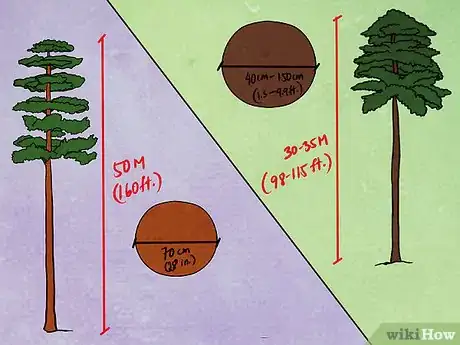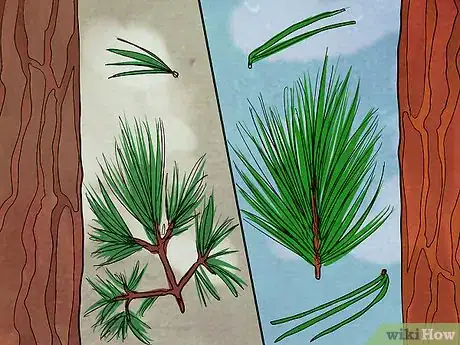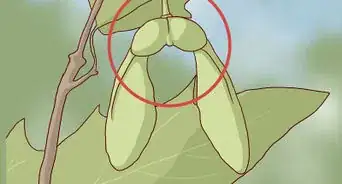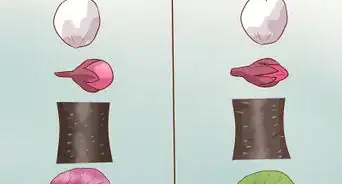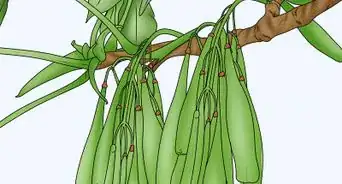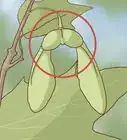X
wikiHow is a “wiki,” similar to Wikipedia, which means that many of our articles are co-written by multiple authors. To create this article, 9 people, some anonymous, worked to edit and improve it over time.
There are 9 references cited in this article, which can be found at the bottom of the page.
This article has been viewed 44,502 times.
Learn more...
The Loblolly Pine (Pinus taeda) and the Longleaf Pine (Pinus palustris) are two evergreen species once commonly found in the southeastern United States. They share similar ranges and characteristics, so differentiating one from the other can sometimes be difficult.
Steps
Method 1
Method 1 of 2:
Considering Location
-
1Consider their normal geographic ranges. The Loblolly Pine ranges from southern New Jersey to northern Florida and as far west as eastern Texas. The Longleaf Pine does not range as far north, with its range extending from Virginia to central Florida and as far west as eastern Texas.
- If you are north of Virginia, you can be sure the tree is a Loblolly Pine.
- If you are in central to southern Florida, you can be sure the tree is as Longleaf Pine.
-
2Look at the land around the tree. Are you in a low, swampy area or a well-drained area?
- The Loblolly Pine prefers depressions and areas that water tends to collect in, while the Longleaf Pine tends to prefer higher ground that is well-drained.
Advertisement -
3Consider the elevation.
- Longleaf Pines range in elevation from sea-level to 600m (1,970ft), though it is most commonly found at 200m (660ft).
- Loblolly Pines range in elevation from 150-365m (500-1,200ft).
Advertisement
Method 2
Method 2 of 2:
Examining Physical Characteristics
-
1Consider the height and width.
- The Loblolly Pine reaches an average height of 30-35m (98-115ft) and 7-11m (23-36ft) wide with a trunk diameter of 0.4-1.5m (1.3-4.9ft). Very large specimens may reach 50m (160ft) in height.
- The Longleaf Pine grows to a similar height, however it remains more slender, with a trunk diameter of just 70cm or 28in.
-
2Pay close attention to the appearance.
- The Loblolly Pine has scaly gray-brown bark and pale blue-green needles that range in length from 10–23 centimeter (3.9–9.1 in), and occur in bundles of three.
- The Longleaf Pine has scaly red-brown bark and dark green needles that range in length from 20–45 centimeter (7.9–18 in) (8-18in) and also occur in bundles of three - often twisted.
-
3Look at the grain and appearance of the wood.
- Both share a medium to fine-grained texture.
- With both species, the heartwood is reddish-brown and the sapwood is yellowish-white.
-
4Consider density and shrinkage.
- Loblolly Pine tends to have less mass and density than Longleaf Pine: 35 pounds per cubic foot compared to 41 pounds per cubic foot.
- Both suffer from comparative shrinkage ratios, with Loblolly pine shrinking only slightly less.
Advertisement
Community Q&A
-
QuestionWhich is better for landscaping near the house?
 Sylas LockwoodCommunity AnswerLongleaf because it produces timber slower, which means there is less risk of hitting the house as it gets older, compared to loblolly.
Sylas LockwoodCommunity AnswerLongleaf because it produces timber slower, which means there is less risk of hitting the house as it gets older, compared to loblolly.
Advertisement
References
- https://www.arborday.org/Trees/treeguide/TreeDetail.cfm?ItemID=899
- http://www.na.fs.fed.us/pubs/silvics_manual/Volume_1/pinus/taeda.htm
- http://www.na.fs.fed.us/pubs/silvics_manual/Volume_1/pinus/palustris.htm
- https://www.nwf.org/Wildlife/Wildlife-Library/Plants/Longleaf-Pine.aspx
- http://www.fs.fed.us/database/feis/plants/tree/pintae/all.html
- http://www.augustaga.gov/1621/Loblolly-Pine
- https://en.wikipedia.org/wiki/Pinus_taeda
- https://en.wikipedia.org/wiki/Pinus_palustris
- http://www.wood-database.com/lumber-identification/softwoods/longleaf-pine/
About This Article
Advertisement



